The Golden Gate Bridge is a suspension bridge that spans the Golden Gate strait, connecting San Francisco to Marin County, California. It carries U.S. Route 101 and California State Route 1, as well as pedestrian and bicycle traffic. An internationally recognized symbol of San Francisco and California, it has also been recognized as one of the Wonders of the Modern World by the American Society of Civil Engineers.
1916: Proposal by James Wilkins
In 1916, James Wilkins made a proposal for a bridge spanning the Golden Gate in a San Francisco Bulletin article.
1917: First Use of the Name
In 1917, the name "Golden Gate Bridge" was first used during discussions between M.M. O'Shaughnessy and Joseph Strauss.
1920: Golden Gate Ferry Company Takes Over
In 1920, the Golden Gate Ferry Company took over the Sausalito Land and Ferry Company's service.
1923: Golden Gate Bridge and Highway District Act
In 1923, the Golden Gate Bridge and Highway District Act was passed, creating a special district to design, build, and finance the bridge.
May 1924: Hearing on Federal Land Use
In May 1924, Colonel Herbert Deakyne held a hearing regarding the use of federal land for the bridge's construction.
1928: Incorporation of the Golden Gate Bridge and Highway District
In 1928, the Golden Gate Bridge and Highway District was incorporated to design, construct, and finance the Golden Gate Bridge.
1929: Wall Street Crash
In 1929, after the Wall Street Crash, the Golden Gate Bridge and Highway District was unable to raise construction funds.
1929: Ferry Company Merges with Southern Pacific Railroad
In 1929, the Golden Gate Ferry Company merged with the ferry system of the Southern Pacific Railroad, becoming the Southern Pacific-Golden Gate Ferries, Ltd.
November 1930: Bond Measure Approved
In November 1930, voters approved a $30 million bond measure to fund the bridge's construction.
November 1931: Charles Ellis Fired
In November 1931, Charles Ellis was fired by Joseph Strauss and replaced with Clifford Paine.
1932: Bank of America Buys Bonds
In 1932, Bank of America agreed to buy the entire bond issue to help the local economy.
January 5, 1933: Construction Begins
On January 5, 1933, construction of the Golden Gate Bridge began.
1933: Doyle Drive Construction
In 1933 the former elevated approach to the Golden Gate Bridge through the San Francisco Presidio, known as Doyle Drive, was constructed.
February 17, 1937: Scaffold Collapse and Fatalities
On February 17, 1937, a scaffold collapsed, sending twelve men falling into the safety net; the net broke, and ten men died.
May 1937: Pedestrian Toll Implemented
From May 1937, pedestrians were charged a toll of 10 cents for bridge access via turnstiles on the sidewalks.
May 27, 1937: Bridge Opens to the Public
On May 27, 1937, the Golden Gate Bridge officially opened to the public, marking the culmination of years of planning and construction.
1937: Foghorn System Set Up
In 1937, a system of five foghorns was set up on the bridge and remains operational to this day, because the fog on the strait becomes so dense that it can fully obscure the whole bridge, creating an even greater hazard for mariners.
1937: Bridge-Opening Celebration
In 1937, the Golden Gate Bridge-opening celebration began on May 27 and lasted for one week, with pedestrians crossing before vehicle traffic was allowed.
1937: Price Reduction to Compete with New Bridge
In 1937, the ferry crossing price was reduced to compete with the newly opened Golden Gate Bridge.
1937: Longest and Tallest Suspension Bridge
In 1937, upon its opening, the Golden Gate Bridge was the longest and tallest suspension bridge in the world.
1937: Initial Toll
In 1937, when the Golden Gate Bridge opened, the toll was 50 cents per car, collected in each direction.
1938: Completion of the Round House Cafe
In 1938, the Round House Café, an Art Deco design by Alfred Finnila, was completed at the southeastern end of the Golden Gate Bridge.
1940: Tacoma Narrows Bridge Collapse
In 1940, the Tacoma Narrows Bridge collapsed due to twisting, an event which later influenced retrofitting of the Golden Gate Bridge.
1950: Toll Reduced to 40 Cents
In 1950 the toll was reduced to 40 cents each way.
December 1, 1951: Windstorm Causes Instabilities
On December 1, 1951, a windstorm revealed swaying and rolling instabilities of the bridge, resulting in its closure.
1953: Retrofitting with Lateral and Diagonal Bracing
In 1953, the Golden Gate Bridge was retrofitted with lateral and diagonal bracing.
1954: Retrofitting with Lateral and Diagonal Bracing Continues
In 1954, retrofitting with lateral and diagonal bracing continued on the Golden Gate Bridge, stiffening the bridge deck.
1955: Toll Reduced to 25 Cents
In 1955 the toll was reduced to 25 cents each way.
1955: Statue of Strauss Moved
In 1955, a statue of Joseph Strauss was moved to a site near the Golden Gate Bridge.
June 1961: BART Consultants' Study
In June 1961, consultants hired by BART completed a study that determined the bridge's suspension section was capable of supporting service on a new lower deck.
July 1961: Clifford Paine Disagrees with BART Study
In July 1961, Clifford Paine, one of the bridge's consulting engineers, disagreed with the BART consultants' conclusion.
January 1962: Engineering Review Board Appointed
In January 1962, due to more conflicting reports on feasibility, the bridge's board of directors appointed an engineering review board to analyze all the reports about running BART over the bridge.
April 1962: Review Board Concludes BART is Not Advisable
In April 1962, the review board's report concluded that running BART on the bridge was not advisable.
1964: Loss of Longest Suspension Bridge Title
In 1964, the Golden Gate Bridge lost its title as the longest suspension bridge in the world.
1968: Plastic Pylons for Traffic Separation
From 1968 opposing traffic was separated by small, plastic pylons.
1968: Tolls Only Collected from Southbound Traffic
In 1968, the bridge was converted to only collect tolls from southbound traffic, with the toll amount reset back to 50 cents.
December 1970: Pedestrian Tolls Discontinued
Until December 1970, pedestrians were charged a toll of 10 cents for bridge access via turnstiles on the sidewalks.
1971: Construction Bonds Retired
In 1971, the last of the construction bonds were retired, with $35 million in principal and nearly $39 million in interest raised entirely from bridge tolls.
December 23, 1982: Bridge Closed Due to High Winds
On December 23, 1982, the Golden Gate Bridge was closed due to high winds of 70 mph (113 km/h).
1982: Replacement of Bridge Deck Begins
In 1982, the original concrete bridge deck began to be systematically replaced with a lighter, stronger steel orthotropic deck.
October 1, 1983: Speed Limit Reduced on Golden Gate Bridge
On October 1, 1983, the speed limit on the Golden Gate Bridge was reduced from 50 to 45 mph (80 to 72 km/h) to improve safety.
December 3, 1983: Bridge Closed Due to High Winds
On December 3, 1983, the Golden Gate Bridge was closed due to wind gusts of 75 mph (121 km/h).
1985: Midspan Foghorns Replaced
Dating back to 1985, the midspan foghorns replaced the original horns that had partly failed in the late 1970s, causing them to sound with only a single tone.
1986: Replacement of Bridge Deck Completed
From 1982 to 1986, the original bridge deck was systematically replaced with a lighter, stronger steel orthotropic deck, without completely closing the roadway.
1987: Fiftieth Anniversary Celebration
In 1987, for the fiftieth anniversary celebration, the Golden Gate Bridge district closed the bridge to automobile traffic and allowed pedestrians to cross it, which led to overcrowding.
1990: Acrylic topcoats used for repainting
In 1990, acrylic topcoats began to be used instead of vinyl topcoats for repainting the Golden Gate Bridge, motivated by air-quality concerns.
1991: Toll Raised to $3.00
In 1991, the toll was raised a dollar to $3.00.
1993: Loss of Tallest Towers Title
Until 1993, the Golden Gate Bridge towers were the world's tallest on a suspension bridge, when they were surpassed by the Mezcala Bridge in Mexico.
1995: Corrosion Protection Program Completed
In 1995, the program to improve corrosion protection by stripping the original paint and repainting the bridge with zinc silicate primer and vinyl topcoats was completed. Afterwards the maintenance was done by 38 painters.
November 24, 1996: Environmentalist Protest Snarls Traffic
On November 24, 1996, actor Woody Harrelson joined a group of local environmentalists who draped a large banner above the roadway deck protesting CEO Charles Hurwitz over his aggressive logging advances. The incident snarled traffic and caused delays lasting the entire day.
1997: Penalties Stiffened for Trespassing
In 1997, legislation authored by State Senator Quentin Kopp and signed into law by Governor Pete Wilson stiffened penalties for trespassing on the bridge, as an effort to deter any more disruptive stunts.
1998: Loss of Tallest Suspension Bridge Title
In 1998, the Golden Gate Bridge lost its title as the tallest suspension bridge in the world.
1999: Ranked on List of America's Favorite Architecture
In 1999, the Golden Gate Bridge was ranked fifth on the List of America's Favorite Architecture by the American Institute of Architects.
2002: FasTrak Toll System Introduced
In 2002, the Golden Gate Bridge began accepting tolls via the FasTrak electronic toll collection system, with $4 tolls for FasTrak users and $5 for those paying cash.
2003: Railings Added to Walkways
In 2003, railings were added between the walkways and the traffic lanes, primarily to prevent bicyclists from falling into the roadway.
March 2005: Bridge Board Commits to Movable Barrier Study
In March 2005, the Bridge Board of Directors committed to finding funding to complete the $2 million study required prior to the installation of a movable median barrier.
November 2006: Corporate Sponsorship Program Recommended
In November 2006, the Golden Gate Bridge, Highway and Transportation District recommended a corporate sponsorship program for the bridge to address its operating deficit.
May 2007: Formal Report Giving Ellis Credit
In May 2007, the Golden Gate Bridge District issued a formal report on 70 years of stewardship and decided to give Charles Ellis major credit for the design of the bridge.
October 2007: Corporate Sponsorship Proposal Discontinued
In October 2007, the Board unanimously voted to discontinue the corporate sponsorship proposal and seek additional revenue through other means, most likely a toll increase.
2007: Queen Mary 2 Visit
In 2007, the foghorns blared wildly as Queen Mary 2 passed under the bridge for her visit in San Francisco.
March 2008: Congestion Pricing Approved
In March 2008, the Golden Gate Bridge District board approved a resolution to start congestion pricing at the Golden Gate Bridge, charging higher tolls during the peak hours. This allowed the Bay Area to meet the federal requirement to receive $158 million in federal transportation funds.
August 2008: Congestion Pricing Program Ended
In August 2008, transportation officials ended the congestion pricing program in favor of varying rates for metered parking along the route to the bridge including on Lombard Street and Van Ness Avenue.
2008: Toll Amounts Increased
In 2008, the Golden Gate Bridge District increased the toll amounts to $5 for FasTrak users and $6 to those paying cash.
2008: Wind Resistance
Until 2008, the bridge was closed because of weather conditions only three times. The Golden Gate Bridge was designed to safely withstand winds of up to 68 mph (109 km/h).
September 2009: Congestion Toll Implementation Deadline
As a condition of the grant, the congestion toll was to be in place by September 2009.
December 2009: Presidio Parkway Construction Begins
In December 2009, construction began on the $1 billion replacement for Doyle Drive, temporarily known as the Presidio Parkway.
January 2011: Toll Takers to Be Eliminated
In January 2011, the Golden Gate District voted to eliminate all toll takers by 2012 and use only open road tolling, in an effort to save $19.2 million over the following 10 years.
May 2012: No Plan to Rename Doyle Drive
As of May 2012, an official at Caltrans said there is no plan to permanently rename the portion known as Doyle Drive.
May 27, 2012: 75th Anniversary Commemoration
On Sunday, May 27, 2012, to commemorate the Golden Gate Bridge's 75th anniversary, automated user-controlled solar beacons were temporarily installed atop the towers.
2012: Visitor Center Opened
In 2012, the "Bridge Pavilion" (renamed the "Golden Gate Bridge Welcome Center") visitor center and gift shop opened on the San Francisco side, adjacent to the southeast parking lot, in time for the bridge's 75th-anniversary celebration.
2012: Toll Taker Elimination Delayed
In 2012, the elimination of toll takers was delayed.
2012: Renovation of Tourist Plaza and Round House Cafe
In 2012, the tourist plaza and Round House Café were renovated, and the official gift shop was moved to the adjacent plaza.
2012: Initial Retrofit Completion Plan
The retrofit of the Golden Gate Bridge was initially planned to be completed in 2012 to improve the structure's ability to withstand an earthquake.
March 2013: Toll Taker Elimination
In March 2013 the Golden Gate Transportation District implemented the use of license plate tolling and eliminated toll takers.
October 18, 2013: Foghorn Malfunction
On October 18, 2013, at around 2:00 a.m., one foghorn sounded perpetually for nearly an hour due to a malfunctioning relay. It was disconnected by 3:00 a.m. and repaired later that morning.
2013: All-Electronic Tolling Implemented
Since 2013, all-electronic tolling has been in effect. Drivers may pay using the FasTrak electronic toll collection device or the license plate tolling program.
April 7, 2014: Toll Increased for FasTrak and Other Payment Systems
On April 7, 2014, the toll for users of FasTrak was increased from $5 to $6, while the toll for drivers using either the license plate tolling or the one time payment system was raised from $6 to $7. Bicycle, pedestrian, and northbound motor vehicle traffic remained toll free.
January 11, 2015: Movable Median Barrier Installation Completed
On January 11, 2015, installation of the movable median barrier was completed after a 45.5-hour closure to private vehicle traffic. The new barrier system, including the zipper trucks, cost approximately $30.3 million.
July 2015: Tolls Increased by 25 Cents
In July 2015, the Golden Gate Transportation District increased the tolls by 25 cents, and then by another 25 cents each of the next three years.
2015: Traffic Switched to Finished Presidio Parkway
On the weekend of July 9–12, 2015, traffic was switched onto the finished Presidio Parkway.
April 2017: Suicide Prevention Barriers Implementation
In April 2017, after years of debate and an estimated more than 2,000 deaths, implementation of suicide prevention barriers began on the Golden Gate Bridge, which was previously the most used suicide site in the world.
May 2017: Retrofit Expected to Take Several More Years
As of May 2017, the program to retrofit the Golden Gate to better resist seismic events was expected to take several more years.
2017: Cetacean Recoveries Near Golden Gate Bridge
As of 2017, three species of cetaceans (whales) that had been absent in the area for many years have shown recoveries and recolonizations in the vicinity of the Golden Gate Bridge.
March 2019: Annual Toll Increases Approved Through 2023
In March 2019, the Golden Gate Transportation District approved a plan to implement 35-cent annual toll increases through 2023, except for the toll-by-plate program which will increase by 20 cents per year.
2019: Installation of New Railing Slats
In 2019, new, more flexible railing slats were installed on the west side of the Golden Gate Bridge to improve its aerodynamic tolerance of high wind to 100 mph (161 km/h).
June 6, 2020: Protest Against Police Brutality
On June 6, 2020, protestors occupied the bridge as part of a nationwide denunciation to police brutality in the wake of the George Floyd's murder.
June 2020: Humming Noise Reported
In June 2020, residents across San Francisco and Marin Counties began to notice a humming noise from the Golden Gate Bridge. The Golden Gate Bridge Highway and Transportation District determined that the noise is produced by new railing slats when a strong zephyr blows.
2020: Engineering Analysis of Singing Noise
An independent engineering analysis of a 2020 sound recording of the singing noise concludes that the noise comprises a variety of Aeolian tones, arising in this case from the ambient wind blowing across metal slats of the newly installed sidewalk railings.
November 2021: Protest Against COVID-19 Mandates
In November 2021, two California Highway Patrol officers and three bridge employees were injured in a vehicular chain-reaction crash during a protest against government-mandated COVID-19 vaccinations.
December 16, 2021: Noise Fix Approved
On December 16, 2021, the Bridge District approved a fix for the noise, involving the installation of 12,000 ∪-shaped clips with rubber dampers between the slats at a cost of $450,000.
2021: Bridge Designated as Part of U.S. Bicycle Route 95
In 2021, the Golden Gate Bridge was designated as part of U.S. Bicycle Route 95.
2023: Toll Increase Plan Ends
In 2023, the plan approved in March 2019 to implement 35-cent annual toll increases ended.
2023: Inflation Adjusted Project Cost
In 2023, the project cost more than $35 million, which is equivalent to $610 million when adjusted for inflation.
January 2024: Suicide Net Installation Completed
In January 2024, the installation of suicide prevention nets on the Golden Gate Bridge was completed. The construction exceeded the initial budget by $17 million.
February 2024: Pro-Palestinian Protest
In February 2024, pro-Palestinian protestors gathered on the deck to decry the Gaza war and the turmoil afflicting Palestinians in Gaza.
March 2024: Annual Toll Increases Approved Through 2028
In March 2024, the district approved another plan to implement 50-cent annual toll increases through 2028.
July 1, 2024: Toll Rate Change
Effective July 1, 2024, the toll rate for passenger cars with license plate accounts is $9.50, while FasTrak users pay a discounted toll of $9.25.
October 2024: Thwarted Suicide Attempts Decrease
Through the end of October 2024, thwarted suicide attempts at the Golden Gate Bridge were down from an annual average of 200 to 106.
November 21, 2024: Suicide Deaths Reduced
As of November 21, 2024, the Golden Gate Bridge Highway and Transportation District reported that the number of deaths by suicide year to date had decreased to eight, a significant drop from the average of 33.5.
2024: 2024 Equivalent Tolls
In 2024, the equivalent values of historical tolls were calculated.
2024: Inflation Adjusted Cost
In 2024, the original 1916 estimated cost of $100 million for the Golden Gate Bridge is equivalent to $2.9 billion when adjusted for inflation.
June 30, 2025: Toll Rate in Effect
As of June 30, 2025, the toll rate for passenger cars with license plate accounts is $9.50, while FasTrak users pay a discounted toll of $9.25.
2025: Expected Completion of Noise Fix Installation
The Bridge District expects instillation to be completed in 2025, to fix the noise caused by the wind blowing across the metal slats of the newly installed sidewalk railings.
2028: Toll Increase Plan Ends
In 2028, the plan approved in March 2024 to implement 50-cent annual toll increases will end.
Mentioned in this timeline

Donald John Trump is an American politician media personality and...
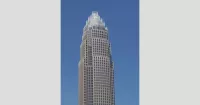
Bank of America is a multinational investment bank and financial...
California is a U S state on the Pacific Coast...
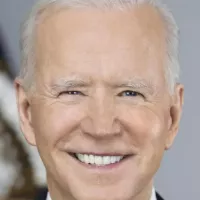
Joe Biden a member of the Democratic Party served as...
Azerbaijan is a transcontinental and landlocked country located in the...

San Francisco is a major commercial financial and cultural hub...
Trending

Tyrese Kendrid Maxey known as The Franchise and Mad Max is a professional basketball player currently with the Philadelphia ers...
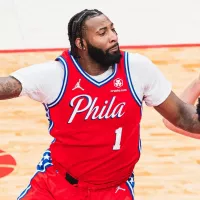
Andre Drummond is a Jamaican-American professional basketball player currently playing center for the Philadelphia ers in the NBA He was...
Taylor Momsen is an American singer songwriter musician model guitarist and former actress She is known for her roles as...

Gene Simmons also known as The Demon was the bassist and co-lead singer of the rock band Kiss He co-founded...
27 days ago New handbag, dishes, snacks, drinks, and holiday mocktails appear at Disney Springs.
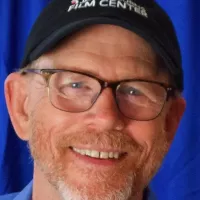
6 months ago Ron Howard Reflects on 'The Studio' Scene with Bryan Cranston, Sarah Polley, and Dave Franco.
Popular

Tucker Carlson is an American conservative political commentator known for...

Candace Owens is an American conservative political commentator and author...

XXXTentacion born Jahseh Dwayne Ricardo Onfroy was a controversial yet...

Ben Shapiro is a prominent American conservative political commentator media...

William Franklin Graham III commonly known as Franklin Graham is...
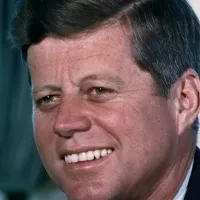
John F Kennedy JFK was the th U S President...
